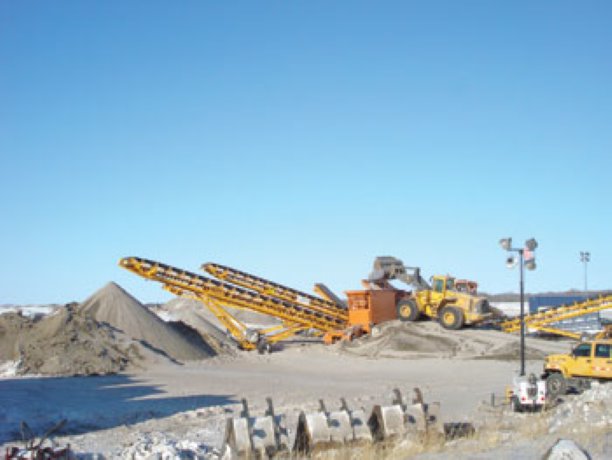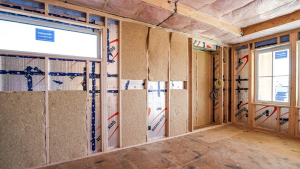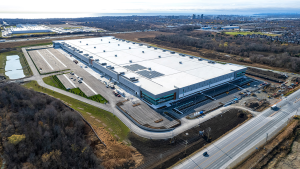It has been a good winter in Saskatchewan to crush concrete, says a project engineer with PSI Technologies in Saskatoon.
Regina
It has been a good winter in Saskatchewan to crush concrete, says a project engineer with PSI Technologies in Saskatoon.
"It's been a mild winter, so it’s been easy," said Colin Wandzura, from Saskatoon.
He and his crew were gearing up for a return to Regina to complete a 140,000 tonne crushing job for the City of Regina.
“It's been really nice on the machinery and the ground hasn’t really stayed frozen, either,” he said.
The winter temperatures have been well-above normal across Canada this year, especially on the prairies, which is a boon for the two seven-member PSI crews, who work right around the clock in 12-hour shifts.
In temperatures below -20C, the hydraulic lines on the Eagle Impact Crusher, that PSI uses to turn three-quarter metre-sized blocks of concrete into pebble-sized piles of aggregate, begin to stall.
“Other parts of the machine become more brittle, too,” he said.
The City of Regina has contracted PSI Technologies to obliterate its three-year store of discarded concrete and asphalt for re-use as aggregate fill in municipal waterworks and road projects, as part of the city’s New Waste Plan for a Greener Regina.
The plan keeps old concrete and asphalt out of the city landfill, and creates a ready supply of low-cost, local and ample aggregate fill for future projects.
Most of the material comes from old sidewalks, roads and buildings.
Not only are the cost-saving and “green” benefits palpable, but according to Les Malawski, manager of the asphalt production and materials engineering branch of Public Works, Regina, the self-generated supply is becoming increasingly important to the municipality.
Gravel pits, normally considered economically-feasible to be within 100 kilometres of the city, are being raided by potash and construction companies as production, exploration and building booms across the province.
Malawski referred to the stockpiles of recycled materials as the gravel pits of the future, at least for municipal use.
The city mostly uses the crushed concrete to backfill waterworks trenches after water-line repair and as a base in road repair work.
None of the recycled material is sold on the open market.
“The real advantage of the crushed concrete is its ability to absorb moisture in the trench. There’s always a little bit of active cement left in the mixture, too, so by sucking up whatever moisture will be left in the trench and around the pipe, it creates a nice dense pack that’s basically impermeable,” he said.
The crushed asphalt is mainly used as backfill for sewer line work, gravel road repair work, shoulder material, back lanes and to cover certain large facility parking lots, such as a community football field parking lot.
The asphalt is not used to back-fill water lines, Malawski said. This is due to its potential to leach into the water.
However, a University of Florida study in 1998, “Leaching Characteristics of Asphalt Road Waste”, did attempt to dispel that fear.
“The asphalt is completely oxidized, all the volatiles are gone,” Malawski said.
“But, to be on the safe side, we only use the asphalt on sewer lines.”
And, with broken up heaps of concrete and asphalt, come twisted piles of rebar, steel and wood.
The crew starts pre-processing, Wandzura said, by breaking down the larger pieces and any rebar, steel or wood that can be removed by hand is separated.
From there, the material is fed into the Eagle Impact Crusher—it is crushed and re-crushed until it is small enough to slip through the selected, pre-sized screens (normally 20 millimetres in diameter or less). As the concrete and/or asphalt fall off the conveyor belt back onto the screens below, rebar and steel cling to the powerful magnetic force under the belt and are deposited into a pile on the underside of the crusher.
In Regina, the rebar material is sent to the Evraz foundry and turned into slag.
“It’s becoming more of a trend here because it’s becoming harder to come across virgin material,” Wandzura said.
“Pretty much any contractor buys up this stuff right now. But, if you go to the states, it’s more common for them because they don’t have the same aggregate sources that we did, but we’re getting more jobs around here now. People are starting to realize the economic benefit of it.”











Recent Comments
comments for this post are closed